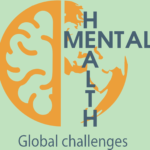Peacebuilding and Mental Health: Moving beyond Individual Pathology to Community Responsibility
Moving beyond Individual Pathology to Community Responsibility
DOI:
https://doi.org/10.32437/mhgcj.v1i1.13Keywords:
mental health, community building, strategic peacebuilding, whole-health strategies, Canada, UkraineAbstract
This article asserts the importance of directing the attention of the global community not only on treatment, but also on a holistic view of health and health care services that will make it impossible for any individual to believe that they are not worthy of every consideration and support to be fully functioning, empowered community members. Authors call upon psychologists, social workers and other professionals interested in peacebuilding to refocus, not away from trauma recovery, but more broadly to whole health for all communities
References
Canadian Women's Foundation. (2016, May). Fact Sheet: Moving women out of violence. Retrieved from https://www.canadianwomen.org/wpcontent/uploads/2017/09/FactSheet-VAWandDV_Feb_2018-Update.pdf
Centre for Addiction and Mental Health. (2018). Mental illness and addiction: Facts and statistics. Retrieved April 2018, from CAMH: https://www.camh.ca/en/driving-change/thecrisis-is-real/mental-health-statistics
Flaherty, M. P., & Stavkova, S. (2018). Pedagogy for social development: Building capacity through participatory action research. in progress.
Gaetz, S., Dej, E., Richter, T., & Redman, M. (2016). The state of homelessness in Canada 2016. Toronto: Canadian Observatory on Homelessness Press. Retrieved from The state of homelessness in Canada 2016: http://homelesshub.ca/sites/default/files/SOHC16_final_20Oct2016.pdf
Medeiros, E. (2007). Integrating menatl health into post-conflict rehabilitation: The case of Sierra Leonean and Liberian 'child soldiers'. Journal of Health Psychology, 12, 498-504.
Miller, K. E., & Rasmussen, A. (2010). War exposure, daily stressors, and mental health in conflict and post-conflict settings: Bridging the divide between trauma-focused and psychosocial frameworks. Social Science and Medicine, 70(1), 7-16.
Pearson, C., Janz, T., & Ali, J. (2015, November 27). Health at a glance: Mental and substance use disorders in Canada. Retrieved from Statistics Canada: http://www.statcan.gc.ca/pub/82-624-x/2013001/article/11855-eng.htm
Roberts, B., Damundu, E., Lomoro, O., & Sondorp, E. (2009). Post-conflict mental health needs: A cross-section survey of trauma, depression and associataed factors in Juba, South Sudan. BMC Psychiatry, 9.
Schirch, L. (2013). Conflict assessment and peacebuilding planning: Toward a participatory approach to human security. boulder, CO: Kumarian Press.
Statistics Canada . (2017, July 24). Police-reported crime statistics in Canada, 2016. Retrieved from Statistics Canada: http://www.statcan.gc.ca/pub/85-002-x/2017001/article/54842-eng.htm
UNHCR. (2017). Ukraine. Retrieved April 2018, from UNHCR: Global Focus: http://reporting.unhcr.org/Ukraine
World Bank. (October, 2017). Mental health in transition: Assessment and guidance for strengthening the integration of mental health into primary health care and community-based service platforms in Ukraine. Kyiv, Ukraine: World Bank Group.
World Health Organization. (2017, August). Health response to the humanitarian crisis in Ukraine: Facts and figures. Retrieved April 2018, from World Health Organization: http://www.euro.who.int/en/health-topics/emergencies/health-response-to-the-humanitariancrisis-in-ukraine/facts-and-figures
World Health Organization. (n.d.). Mental health, human rights & legislation. Retrieved February 2018, from Mental health: www.who.int/mental_health/policy/legislation/en/
Worldometers. (2018, April 23). Canadian Population. Retrieved from Worldometers: http://www.worldometers.info/world-population/canada-population/









 E-mail us: viktor.vus@mhgcj.org
E-mail us: viktor.vus@mhgcj.org 